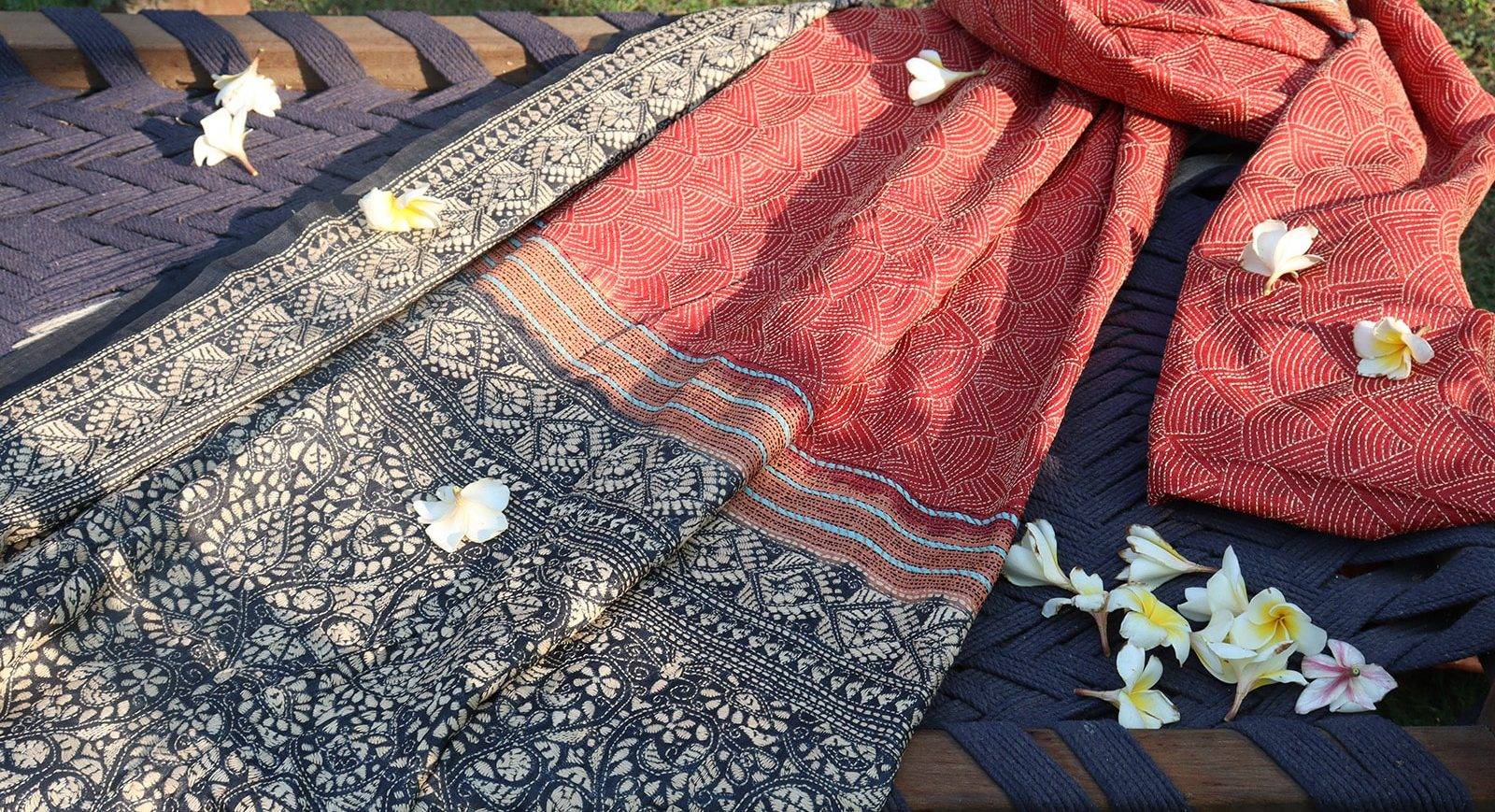
Kantha: The Storytelling Stitch
Kantha embroidery, a time-honored craft, traces its roots back to the Bengal region of the Indian subcontinent, emerging even before the Vedic era, prior to 1500 BCE. The essence of kantha lies in its name, signifying both the intricate running stitch technique employed and the final, resplendent fabric it yields.
This cherished art form was an embodiment of tradition, exclusively practiced by women across rural classes. It never sought the patronage of kings or the aristocracy; rather, it thrived as a legacy passed down from mother to daughter, a form of learning and a precious dowry.
Kantha artisans breathed life into their creations using old cotton saris, lungis, and dhotis, ingeniously extracting thread from the very fabric they worked with. Layering five to seven pieces together, they favoured lighter hues for the outer layers, ensuring the stitches and patterns shone through. Every inch of cloth bore witness to the meticulous running stitch, rendering not just beauty but also remarkable durability.
Initially, the kantha stitch was simple and straightforward, evolving over time into the intricate “nakshi kantha.” Nakshi kantha wove together motifs inspired by Kantha: The Storytelling Stitchreligion,culture, and the everyday experiences of these skilled women.
Within these cloths, the imagination of its creators ran wild. Kanthas whispered tales of folklore, spiritual beliefs, mythological sagas, and the personal lives of the artisans. Nakshi kanthas, though devoid of strict symmetry, typically featured a central lotus surrounded by stylized depictions of birds, flora, fish, and other scenes, each with its own narrative to tell.
What remains a lesser-known fact of kantha is its role as a storyteller. The motifs and patterns etched upon these fabrics are conduits for tales of the women who breathed life into them – their beliefs, aspirations, and dreams. This, in essence, elevates kantha beyond mere artistry; it becomes a profound repository of meaning and culture.





